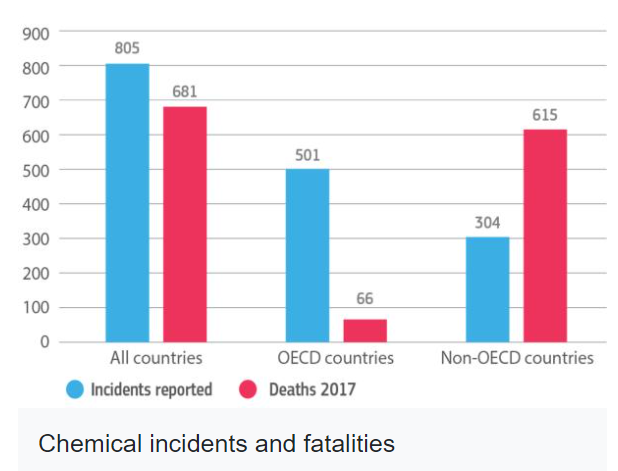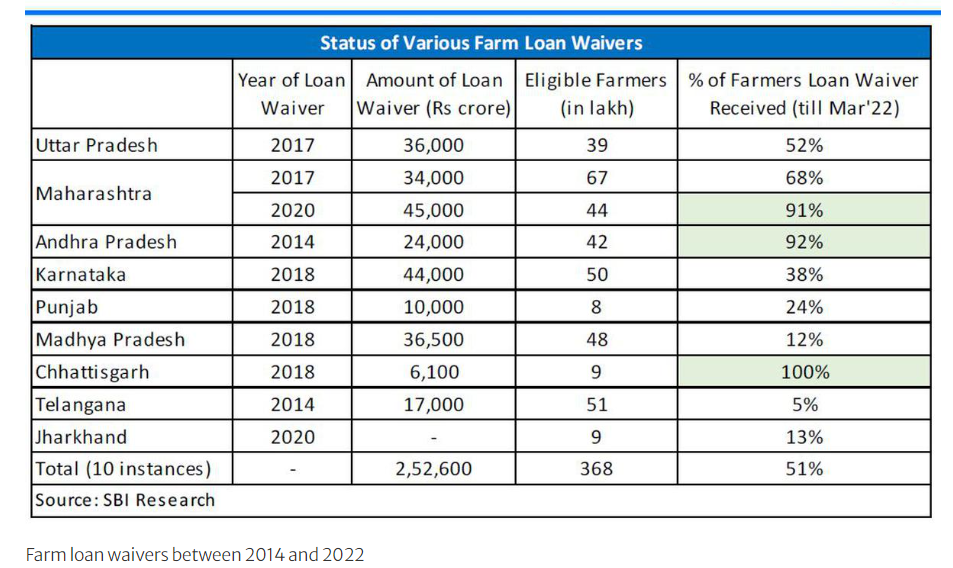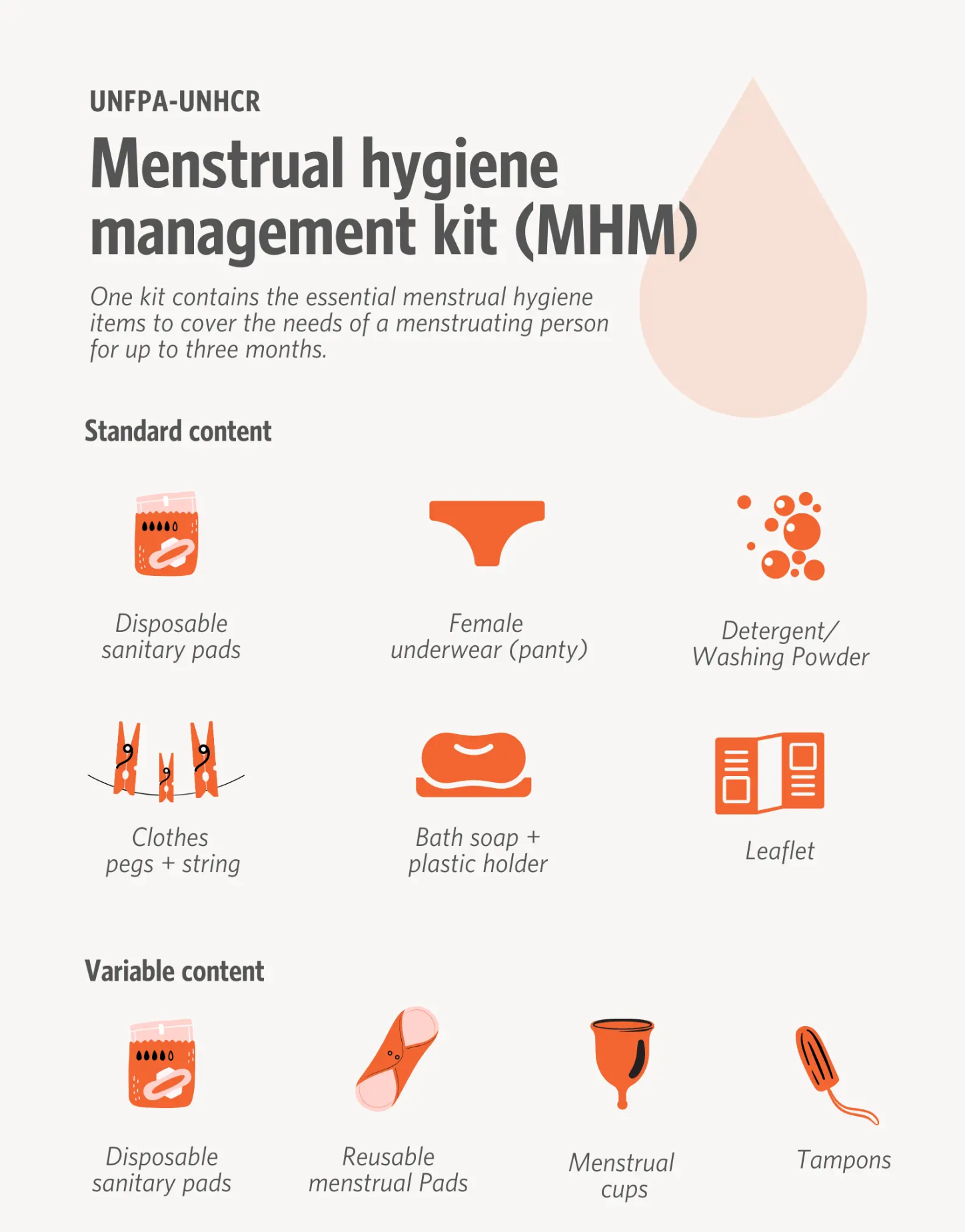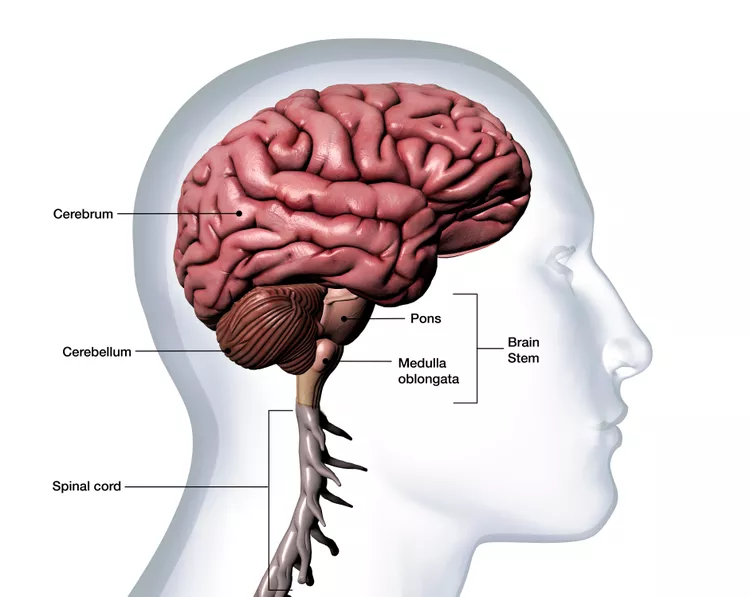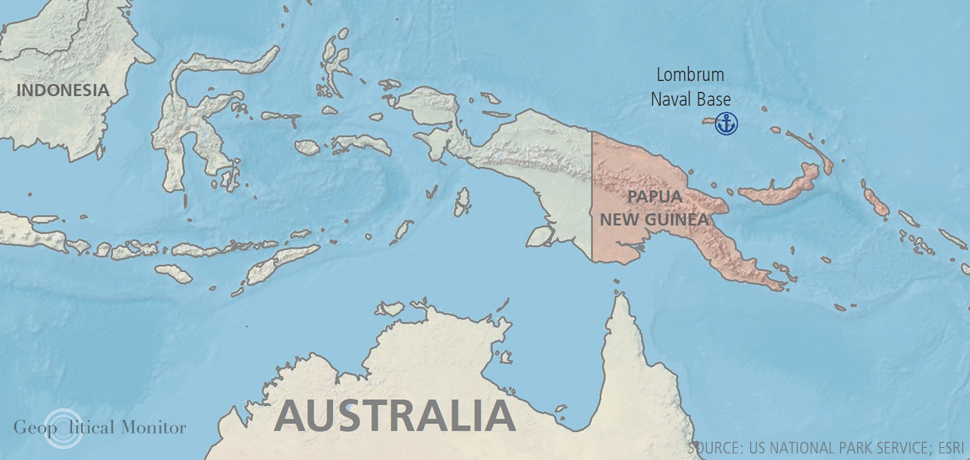Infographics
Biodiversity & Environment
IUCN Report on Mangrove Ecosystems
For Prelims: International Day for the Conservation of the Mangrove Ecosystem, UN Educational, Scientific and Cultural Organization, Indian State Forest Report 2021, Sundarbans, Royal Bengal tiger, Irrawady Dolphin, MISHTI (Mangrove Initiative for Shoreline Habitats & Tangible Incomes), Sustainable Aquaculture In Mangrove Ecosystem (SAIME) initiative.
For Mains: Significance of Mangroves, Challenges Related to Mangroves in India
Why in News?
The International Union for Conservation of Nature (IUCN) has issued a new report cautioning that half of the world's mangrove ecosystems are at risk of collapsing. This marks the first comprehensive global assessment of mangroves by IUCN.
- The report, titled "Red List of Mangrove Ecosystems," unveiled these findings on International Day for Biodiversity (22nd May).
What are the Key Findings of the Study?
- About: This study classified the world's mangrove ecosystems in 36 different regions called provinces and assessed the threats and risk of collapse in each region.
- Findings:
- More than Half of the Worlds Margrove Under Risk:
- Over 50% of the world's mangrove ecosystems are at risk of collapse (classified as either vulnerable, endangered, or critically endangered), with nearly 1 in 5 facing severe risk.
- One-third of the world's mangrove ecosystem provinces will be severely affected by sea-level rise, with 25% of the global mangrove area predicted to be submerged in the next 50 years.
- Higher Risk to South Indian Mangroves:
- Mangrove ecosystem in South India, shared with Sri Lanka and Maldives, is categorised as "critically endangered".
- In contrast, mangrove ecosystems in the Bay of Bengal region (shared with Bangladesh) and the western coast (shared with Pakistan) are classified as "least concerned".
- Climate Change as a Major Threat:
- A study found that globally, climate change is the major threat to mangrove ecosystems, affecting 33% of mangroves.
- It is followed by deforestation, development, pollution, and dam construction.
- Increased frequency and intensity of cyclones, typhoons, hurricanes, and tropical storms are impacting mangroves on certain coastlines.
- A study found that globally, climate change is the major threat to mangrove ecosystems, affecting 33% of mangroves.
- Global Impact:
- Coasts along the Northwest Atlantic, North Indian Ocean, Red Sea, South China Sea, and Gulf of Aden are predicted to be significantly impacted.
- Without increased conservation, about 7,065 sq km (5%) more mangroves could be lost, and 23,672 sq km (16%) will be submerged by 2050.
- More than Half of the Worlds Margrove Under Risk:
What is the Status of Mangroves Cover in India?
- About:
- Mangroves are a unique type of coastal ecosystem found in tropical and subtropical regions. They are dense forests of salt-tolerant trees and shrubs that thrive in intertidal zones, where land meets the sea.
- These ecosystems are characterised by their ability to withstand harsh conditions, such as saline water, tidal fluctuations, and muddy, oxygen-poor soils.
- Mangrove Cover:
- About 40% of the world's mangrove cover is found in South East Asia and South Asia.
- India has about 3% of the total mangrove cover in South Asia.
- India's mangrove cover has increased by 54 sq km (1.10%) compared to the previous assessment.
- The current mangrove cover in India is 4,975 sq km, which is 0.15% of the country's total geographical area.
- West Bengal (42.45%) has the largest share of India's mangrove cover, followed by Gujarat at 23.66% and Andaman & Nicobar Islands at 12.39%.
- The South 24 Parganas district of West Bengal alone accounts for 41.85% of India's mangrove cover. This region includes the Sundarbans National Park, one of the largest mangrove forests in the world.
- Gujarat has shown the maximum increase of 37 sq km in mangrove cover.
- About 40% of the world's mangrove cover is found in South East Asia and South Asia.
What are India’s Initiatives Related to Mangroves Conservation?
- Coastal Regulation Zone (CRZ) Notification (2019): This notification under the Environment (Protection) Act, 1986, classifies coastal areas including wetlands into four categories. It restricts activities that could damage mangroves, such as:
- Dumping of waste (industrial or otherwise).
- Industrial activities within the CRZ.
- Land reclamation and building in these areas.
- Central Sector Scheme on 'Conservation and Management of Mangroves and Coral Reefs':
- It provides financial assistance to coastal states and union territories for implementing action plans specific to mangrove conservation.These plans can include surveying, alternative livelihoods for local communities, awareness campaigns, etc.
- Mangrove Initiative for Shoreline Habitats & Tangible Incomes (MISHTI): Launched in the 2023-24 Union Budget, MISHTI is a dedicated initiative for promoting and conserving mangroves. It aims to:
- Increase mangrove cover along the coastline and on degraded lands.
- Support sustainable development and protect vulnerable coastal areas.
- Other Relevant Acts:
- The Indian Forest Act, 1927: States like Maharashtra have designated mangroves on government land as Reserved Forests, granting them legal protection under this act.
- The Wildlife Protection Act, 1972: Some mangrove areas are crucial habitats for wildlife and receive protection under this act.
- Additional laws like the Water (Prevention and Control of Pollution) Act, 1974 and the Maharashtra Tree (Felling) Act, 1972 offer further protection by regulating activities that could pollute or damage these ecosystems.
How Significant is the Mangroves Ecosystem?
- Biodiversity Conservation: Mangroves provide a unique habitat for a wide variety of plant and animal species, serving as breeding, nursery, and feeding grounds for numerous marine and terrestrial organisms.
- For example, Sundarban hosts the Royal Bengal tiger, Irrawady Dolphin, Rhesus macaque, Leopard cats, Small Indian civet.
- Coastal Protection: Mangroves act as natural buffers against coastal erosion, storm surges, and tsunamis.
- Their dense root systems and tangled network of prop roots stabilise shorelines and reduce the impact of waves and currents.
- During hurricanes and cyclones, mangroves can absorb and dissipate a significant amount of energy, protecting inland areas and human settlements from devastating damage.
- Carbon Sequestration: Mangroves are highly efficient carbon sinks, sequestering large amounts of carbon dioxide from the atmosphere and storing it in their biomass and sediments.
- Fisheries and Livelihoods: Mangroves support fisheries by providing nursery areas for fish and shellfish, enhancing fishery productivity and contributing to livelihood and local food security.
- Water Quality Improvement: Mangroves act as natural filters, trapping and removing pollutants and excess nutrients from coastal waters before they reach the open ocean.
- Their role in purifying water contributes to the health of marine ecosystems and helps maintain the balance of fragile coastal ecosystems.
- Tourism and Recreation: Mangroves offer recreational opportunities such as eco-tourism, birdwatching, kayaking, and nature-based activities, which can promote sustainable economic growth for local communities.
What are the Challenges Faced by the Mangroves Ecosystem?
- Habitat Destruction and Fragmentation: Mangroves are often cleared for various purposes, including agriculture, urbanisation, aquaculture, and infrastructure development.
- Such activities lead to the fragmentation and loss of mangrove habitats, disrupting their ecosystem functioning and biodiversity.
- The conversion of mangroves into shrimp farms and other commercial uses is a significant concern.
- Climate Change and Sea Level Rise: Rising sea levels due to climate change pose a significant threat to mangroves.
- Climate change also brings about extreme weather events, such as cyclones and storms, which can cause severe damage to mangrove forests.
- Pollution and Contamination: Pollution from agricultural runoff, industrial discharges, and improper waste disposal contaminate mangrove habitats.
- Heavy metals, plastics, and other pollutants adversely affect the flora and fauna of these ecosystems.
- Lack of Integrated Management: Often, mangroves are managed in isolation, without considering their interconnectedness with adjacent ecosystems like coral reefs and seagrass beds.
- Integrated management approaches that consider the broader coastal ecosystem are necessary for effective conservation.
- Overfishing and Unsustainable Harvesting: Overfishing and unsustainable harvesting of mangrove resources, such as fish, crabs, and timber, can reduce their ecological and economic value.
- Invasive species: Invasive species, such as the non-native red mangrove, can outcompete native species and alter the structure and function of mangrove ecosystems.
- Lack of awareness and protection: Mangroves are often undervalued and lack legal protection, which can make them vulnerable to exploitation and destruction.
What can be Done to Protect Mangrove Ecosystem?
- Cracking Down on Harmful Activities: Implement stricter laws and enhance enforcement to prevent pollution, deforestation, and unsustainable development along the coast.
- Mangrove Adoption Program: Initiate a public-driven program allowing individuals, corporations, and institutions to "adopt" sections of mangroves.
- Participants would take on the responsibility for the maintenance, protection, and restoration of their adopted areas, fostering a sense of ownership and collective responsibility.
- Mangrove Research and Development: Invest in research to explore novel applications of mangroves, such as using them for phytoremediation to clean polluted water or developing new medicines from mangrove plant extracts.
- This could lead to innovative ways to leverage the unique properties of mangroves for sustainable development.
- Empowering Local Communities: Involve local communities, who often have a deep understanding of mangrove ecosystems, in conservation efforts.
- Create sustainable livelihood opportunities tied to protecting mangroves, fostering a shared responsibility for their well-being.
- Bio-Restoration Techniques: Utilise bio-restoration techniques to revive degraded mangrove areas, helping to maintain original biodiversity.
- Ecological restoration can accelerate mangrove recovery compared to natural regeneration.
- Diverse Species in Restoration Efforts: Ensure restoration efforts include a variety of mangrove species rather than monocultures.
- This approach will create forests that are more resilient to the impacts of climate change.
|
Drishti Mains Question: Q. Discuss the critical importance of mangrove conservation for India's coastal ecology and economy. Suggest a multi-pronged approach for effective mangrove ecosystem management. |
UPSC Civil Services Examination Previous Year Question (PYQ)
Prelims
Q. Which one of the following regions of India has a combination of mangrove forest, evergreen forest and deciduous forest? (2015)
(a) North Coastal Andhra Pradesh
(b) South-West Bengal
(c) Southern Saurashtra
(d) Andaman and Nicobar Islands
Ans: (d)
Mains
Q. Discuss the causes of depletion of mangroves and explain their importance in maintaining coastal ecology. (2019)
Disaster Management
Industrial Accidents
For Prelims: Occupational Safety, Health and Working Conditions Code, 2020, Labour Bureau, International Labour Organisation, ILO Conventions.
For Mains: Occupational safety and health in India - Analysis, Challenges and Steps that can be taken, Framework Regarding Labours in India, Grey Areas Related to the Current Labour Reforms
Why in News?
Recently, an explosion in a chemical unit in Thane, Maharashtra, killed 11 people. Such industrial accidents in India and elsewhere in the world constitute a major problem for industrial establishments.
Industrial and Chemical Disaster
- Industrial Disaster: An industrial disaster is a significant accident at an industrial site that results in extensive damage, injuries, or fatalities.
- Such disasters can stem from various causes, including chemical, mechanical, civil, or electrical processes, as well as accidents, negligence, or incompetence.
- Types: Chemical disasters, Explosions, Mining disasters, Falling objects, Radiological incidents.
- Chemical Disaster: It is defined as the release or spill of a toxic chemical that results in an abrupt and serious disruption of the functioning of a society, causing widespread human, material, or environmental losses that exceed the ability of the affected society to cope using only its own resources.
- According to the National Disaster Management Authority (NDMA), over 130 significant chemical accidents have been reported in the country in the last decade, claiming more than 250 lives.
What are the Key Factors Contributing to Industrial Accidents in India?
- Inadequate Regulation and Monitoring: Redundant regulations, including 15 Acts and 19 rules, lack a unified approach for the chemical industry. This fragmentation leads to overlapping jurisdictions and loopholes, weakening oversight and enforcement of safety measures.
- Lack of Comprehensive Chemical Risk Database: The lack of a central database on industrial chemicals and their risks creates a knowledge gap, hindering hazard assessment and safety protocol development.
- Insufficient Worker Training and Awareness: Boiler operation often falls to untrained, contractual workers, lacking proper safety and emergency response training as highlighted by IIT Kanpur.
- This leads to confusion during accidents and increases risks, especially with hazardous chemicals.
- Poor Investment in Worker Safety: Cost-cutting by some industries often neglects safety equipment and infrastructure, such as proper ventilation and fire safety.
- IIT Kanpur study (2023) stresses the need for increased investment in worker safety to reduce industrial accidents.
- Lack of maintenance: The Visakhapatnam gas leak involving benzimidazole raises concerns about maintenance and operations.
- In the Neyveli incident, a boiler being revived unexpectedly blew out, despite not being operational and mainly involving a furnace and steam production.
Major Industrial Disasters in India in the Past:
India has a long history of industrial accidents, with over 130 significant chemical mishaps reported recently.
- Bhopal Gas Tragedy (1984): The worst industrial disaster ever, a gas leak from a pesticide plant killed over 3,700 people and injured many more.
- Chasnala Mining Disaster (1975): An explosion in a coal mine caused by methane gas and a subsequent mine collapse led to the deaths of around 700 people.
- Jaipur Oil Depot Fire (2009): A fire at an oil storage facility resulted in 12 deaths and the evacuation of over half a million people. The lack of a proper disaster management plan was a major issue.
- Korba Chimney Collapse (2009): A chimney under construction collapsed due to poor construction practices, killing 45 workers.
- Mayapuri Radiological Incident (2010): Workers unknowingly dismantled a radioactive research irradiator in a scrapyard, exposing themselves and others to radiation.
- Bombay Docks Explosion (1944): A cargo ship carrying explosives exploded in Mumbai harbor, killing around 800 people and causing widespread damage.
What are the Consequences of Such Industrial and Chemical Accidents?
- Loss of Life and Injuries: Industrial accidents result in numerous fatalities and serious injuries. Example: The explosion at a chemical factory in Thane claimed 11 lives.
- Environmental Damage: Chemical leaks, explosions, and improper waste disposal can cause severe environmental damage (air, water, and soil pollution).
- Example: The Bhopal Gas Tragedy of 1984 serves as a horrific event, in which leak of methyl isocyanate gas from a Union Carbide plant resulted in thousands of deaths and long-term health problems for countless others.
- Economic Disruptions: The cost of repairing damage to facilities, compensating victims' families, and treating injured workers can be substantial.
- A study by the US Environmental Protection Agency (EPA) found that chemical accidents can decrease property values in surrounding areas by 5-7%, further impacting the local economy.
- Psychological Trauma: The trauma associated with industrial accidents can have long-lasting psychological effects on survivors, witnesses, and families of victims.
- Anxiety, depression, and post-traumatic stress disorder (PTSD) are common consequences.
- Loss of Public Trust: Frequent industrial accidents can erode public trust in regulatory bodies and industries. This can lead to public fear and resistance to new industrial projects.
ILO Recommendations on Industrial Disaster Prevention
- Identification of Hazardous Materials:
- Establish a list of hazardous chemicals and flammable gases based on their inherent risks and set specific threshold quantities.
- Any facility handling hazardous material exceeding the designated amount would be classified as a "major hazard workplace."
- Inventory of Major Hazard Workplaces:
- Each state should maintain a comprehensive inventory of major hazard workplaces within its jurisdiction with details like the type of facility, chemicals used, and quantities stored.
- Centralised Data Management:
- The list of hazardous materials and the inventory of major hazard workplaces should be stored in a centralised computerised database.
- This would allow for easier access to critical information by regulatory bodies, emergency responders, and the public.
What are the Legal Safeguards against Chemical/Industrial Disasters?
- International:
- Sendai Framework for Disaster Risk Reduction 2015-2030
- UN Convention on the Transboundary Effects of Industrial Accident (1992):
- It provides a legal framework for international cooperation on preventing and responding to industrial accidents.
- Parties share information, plan emergencies, and help each other during disasters. This reduces risk of widespread accidents.
- Flexible Framework for Accident Prevention and Preparedness (CAPP) (2006) of UNEP: It adopts a flexible approach to help countries, especially developing ones, build programs to prevent and prepare for chemical accidents.
- It also offers guidance on creating these programs considering a country's specific needs.
- OECD Programme on Chemical Accidents (1990): It focuses on preventing accidents through information sharing and best practices in chemical safety.
- India:
- The Bhopal Gas Leak (Processing of Claims) Act, 1985
- The Environment Protection Act, 1986 (EPA)
- The Public Liability Insurance Act, 1991 (PLIA):
- This act mandates insurance for industries handling hazardous substances.This insurance provides financial relief to those affected by accidents involving these substances.
- The National Environment Appellate Authority Act, 1997:
- This act establishes the National Environment Appellate Authority (NEAA), which hears appeals regarding restrictions placed on certain industrial activities under the Environment Protection Act, 1986 (EPA), ensuring a fair and transparent process.
- The Hazardous Waste (Management Handling and Transboundary Movement) Rules, 1989:
- It requires industries to identify significant accident risks, implement preventive measures, and report any potential hazards to the appropriate authorities.
- Additional Measures:
- The National Disaster Management Authority (NDMA) has issued specific guidelines on Chemical Disaster Management. These guidelines provide direction to various authorities for preparing detailed disaster management plans.
- Several other laws and regulations, like the Factories Act, 1948, and the Insecticides Act, 1968, also play a role in ensuring industrial safety.
Way Forward
- A Robust Regulatory Framework: ILO recommends a comprehensive national framework with clear roles for different government agencies to enforce safety regulations.
- World Bank (2018) suggested strong chemical safety regulations as key to reducing chemical accidents.
- Strengthened Monitoring and Enforcement: IIM Ahmedabad (2020), blames weak enforcement for India's industrial accidents. They recommend stricter penalties and more frequent inspections by qualified personnel.
- Building a Chemical Risk Database: The Bhopal Gas Tragedy of 1984 emphasises the critical need for a centralised database in India to document the risks associated with industrial chemicals.
- OECD promotes the Global Harmonized System of Classification and Labelling of Chemicals (GHS) offers a standardised way to classify these chemicals, aiding in better risk assessments.
- Investing in Worker Training: A 2017 National Safety Council of India (NSCI) study linked worker unawareness of safety protocols to a high number of industrial accidents.
- NSCI recommends comprehensive training programs with drills for all staff levels.
- Promoting Best Practices and Technologies: The UNEP encourages industries to adopt environmentally sound technologies (ESTs).
- ESTs can minimise the use of hazardous materials, improve waste management, and reduce the risk of accidents.
- Incentives and Support for Upgrading Safety Measures: To incentivise safety improvements, financial aid like tax breaks or subsidies can be offered for upgrading infrastructure and adopting new technologies.
The Occupational Safety, Health and Working Conditions Code, 2020
- Employer and Employee Duties: Defines responsibilities for both employers and employees regarding safety.
- Sector-Specific Safety Standards: Establishes safety standards for different industries.
- Employee Well-being: Focuses on worker health, working conditions, working hours, leaves, etc.
- Contractual Worker Rights: Recognises and protects the rights of contract workers.
- Gender Equality: Promotes gender equality by allowing women to be employed in all establishments for all types of work.
Conclusion
The tragic incidents of industrial accidents in India, underscore the urgent need to address the regulatory and knowledge gaps in the country's industrial landscape. By taking a holistic and proactive approach, involving both the government and industry stakeholders, India can work towards a safer and more sustainable industrial development.
|
Drishti Mains Question: Q. Frequent industrial accidents highlight serious regulatory deficiencies and inadequate safety measures. How can India bridge the knowledge gap and prevent future tragedies? |
UPSC Civil Services Examination, Previous Year Question (PYQ)
Prelims:
Q1. In India, why are some nuclear reactors kept under “IAEA safeguards” while others are not? (2020)
(a) Some use uranium and others use thorium
(b) Some use imported uranium and others use domestic supplies
(c) Some are operated by foreign enterprises and others are operated by domestic enterprises
(d) Some are State-owned and others are privately owned
Ans: (b)
Mains:
Q1. With growing energy needs should India keep on expanding its nuclear energy programme? Discuss the facts and fears associated with nuclear energy. (2018)


Indian Economy
Farm Loan Waivers in India
For Prelims: Farm Loan Waiver, State Bank of India (SBI), Comptroller and Auditor General, NABARD, Reserve Bank of India, Inflation, Minimum support prices, Kisan Credit Card scheme
For Mains: Government Policies & Interventions, Growth & Development, Farm Loan Waivers and Related Issues.
Why in News?
Farm loan waivers have become a staple promise in Indian elections, particularly in agricultural states.
- These debt relief schemes, though providing temporary respite, fail to address the root causes of agrarian distress.
What are Farm Loan Waivers?
- About: Farm loan waivers are financial relief measures implemented by governments, where certain agricultural loans are forgiven, relieving farmers from the burden of repayment to reduce the distress among farmers.
- These waivers are often announced during election campaigns as promises to garner support from the farming community.
- Farm loan waivers involve the government absorbing the outstanding debt of farmers by providing a budgetary allocation to banks and financial institutions.
- Farmers face numerous challenges, including disputed land holdings, depleted groundwater reserves, poor soil quality, rising input costs, and low crop productivity.
- Due to a lack of assured remuneration for their produce, farmers often borrow funds from banks or private lenders at high-interest rates.
- Loan waivers provide temporary relief to indebted farmers, but they are not a long-term solution to agrarian distress.
- Implementation of Waivers:
- In times of crop failure or natural calamities, governments may waive penal interest, reschedule loans, or completely waive off outstanding loans.
- The government's budget absorbs the financial liability, not the banks.
- The waivers can be selective, based on factors like loan type (short-term, medium-term, long-term), categories of farmers, or loan sources.
Farm Loans: Scheduled banks offer loans to individual farmers or groups of farmers for agricultural or allied activities such as dairy, fishery, animal husbandry, poultry, bee-keeping and sericulture.
- Short-term (up to 18 months) loans are offered for raising crops during two seasons – Kharif and Rabi, while medium (more than 18 months up to 5 years) and long-term (beyond 5 years) loans are offered for purchasing agricultural machinery, irrigation and other developmental activities.
- Loans are also available for pre-harvest and post-harvest activities such as weeding, harvesting, sorting, and transporting farm produce.
- Most loans have a repayment period in installments up to five years, and interest rates vary depending on the nature of loans and the issuing banks.
Historical Instances of Farm Loan Waivers
- The first pan-India farm loan waiver was introduced in the 1990-91 through the Agricultural and Rural Debt Relief Scheme (ARDRS) providing relief to farmers for up to Rs 10,000 on select loans.
- The second major waiver was the Agricultural Debt Waiver and Debt Relief Scheme (ADWDRS) announced in 2008.
- The government allocated Rs 60,000 crores for farmer relief. Small farmers with less than 2 hectares of land had their entire eligible amount waived off.
- Other farmers with more than 2 hectares of land were offered a one-time settlement (OTS) of 25% of the eligible amount as a rebate, if they pay the remaining 75%.
- According to a study by State Bank of India (SBI), since 2014, various state governments, including Andhra Pradesh, Telangana, Uttar Pradesh, Maharashtra, Karnataka, Punjab, Madhya Pradesh, Chhattisgarh, Jharkhand, and Tamil Nadu, have announced loan waivers amounting to Rs 2.52 lakh crores.
How Do Farm Loan Waivers Affect Farmers and Governments?
- Effects on Farmers:
- Waivers provide short-term relief to farmers struggling with debt, especially in the wake of poor harvests due to natural calamities.
- Critics argue that waivers can lead to a culture of non-repayment, expecting future waivers, which can undermine the credit discipline among the farming community.
- Post-waiver periods often see a tightening of credit as banks become wary of lending, potentially affecting the farmers’ ability to invest in the next crop cycle.
- A report by the Comptroller and Auditor General (CAG) found that the 2008 scheme benefitted several ineligible farmers while leaving out many deserving small and marginal farmers.
- Implementation Challenges: A recent SBI study in 2022 revealed that only half of the beneficiaries of the nine farm loan waivers announced by State governments since 2014 have actually received write-offs.
- Maharashtra had a relatively high implementation rate. In contrast, Telangana had the poorest implementation.
- Effects on Governments:
- Negative Impacts:
- The most immediate impact is the strain on government finances. Waiving loans means forgoing a significant amount of revenue that could be used for other social programs or infrastructure development.
- Large-scale loan waivers can increase government borrowing, leading to higher interest rates and inflation, undermining economic stability.
- Additionally, waivers often fail to tackle core agricultural issues like low crop prices and inadequate infrastructure, offering only short-term relief.
- Positive Impacts:
- Farm loan waivers can redirect funds from debt repayment to other areas. This allows farmers to reinvest in agriculture by purchasing better inputs to increase productivity, and diversify into other agricultural activities like poultry, dairy, or horticulture to generate additional income.
- Governments that implement loan waivers can gain political capital among the large farming population. A NABARD study from 1987 to 2020 found that out of 21 State governments that announced waivers before State polls, only four lost.
- Negative Impacts:
What are the Alternatives to Farm Loan Waivers?
- Increased Public Investment in Agriculture: Allocate a higher share of budgetary resources towards agricultural development as a proportion of total expenditure or GDP, which has been falling each year. Focus on irrigation, electricity, storage, and transportation.
- Ensure easy access to quality, affordable agricultural inputs like seeds, fertilizers, and pesticides. Strengthen the supply chain and distribution for these inputs.
- Enhance investment in agricultural research to develop drought-resistant and high-yielding crop varieties, improve farming techniques, and promote sustainable agriculture.
- Strengthen and expand agricultural extension services to disseminate modern farming practices, new technologies, and research findings to farmers, especially in remote areas.
- Incentivize Crop Diversification: Farmers focus mainly on crops like wheat and rice due to government minimum support prices (MSPs) and procurement assurance.
- Expanding price support and procurement to include oilseeds, pulses, fruits, and vegetables will incentivize crop diversification.
- Implementing supportive policies and promoting water-efficient crops suited to local conditions will enhance sustainability.
- For example: Punjab is facing severe depletion of groundwater reserves and soil degradation due to overuse of urea. The State’s farmers primarily grow wheat and rice, as these are the only viable crops due to government procurement.
- Direct Income Support Schemes: Implement direct income support schemes like PM-KISAN and Kisan Credit Card scheme as alternatives to loan waivers, ensuring efficient fund disbursement via direct benefit transfers (DBT) and Aadhaar-based identification.
- Market Reforms and Access: Improving the functioning of Agricultural Produce Marketing Committees (APMCs) can reduce exploitation by middlemen and ensure farmers get a fair share of the consumer rupee.
- Encouraging wider adoption of the Electronic National Agriculture Market (e-NAM) platform can facilitate online trading and connect farmers directly to consumers, eliminating unnecessary intermediaries.
- Farmer Producer Organizations (FPOs): Farmers forming cooperative societies can benefit from bulk buying seeds, fertilizers, and equipment, reducing costs and getting better deals.
- They can also collaborate on marketing and selling their produce to fetch fairer prices.
- Risk Mitigation Strategies: Offering affordable and accessible crop insurance schemes can protect farmers from financial losses due to natural calamities or unforeseen events.
- Crop insurance based on weather parameters helps mitigate risks from unpredictable weather patterns.
|
Drishti Mains Question: Q. Assess the efficacy of farm loan waivers in addressing long-term agrarian distress. Q. Analyze the impact of recurring farm loan waivers on the financial health of the Governments and the overall economy. |
UPSC Civil Services Examination Previous Year Question (PYQ)
Q1. Under the Kisan Credit Card scheme, short-term credit support is given to farmers for which of the following purposes? (2020)
- Working capital for maintenance of farm assets
- Purchase of combine harvesters, tractors and mini trucks
- Consumption requirements of farm households
- Post-harvest expenses
- Construction of family house and setting up of village cold storage facility
Select the correct answer using the code given below:
(a) 1, 2 and 5 only
(b) 1, 3 and 4 only
(c) 2, 3, 4 and 5 only
(d) 1, 2, 3, 4 and 5
Ans: (b)
Mains
Q. Given the vulnerability of Indian agriculture to vagaries of nature, discuss the need for crop insurance and bring out the salient features of the Pradhan Mantri Fasal Bima Yojana (PMFBY). (2016)


Social Issues
Menstrual Hygiene in Indian Prisons
For Prelims: World Menstrual Hygiene Day, National Family Health Survey, National Crime Records Bureau, World Bank, Menstrual Hygiene Scheme
For Mains: Menstrual hygiene in Indian prisons, Women prisoners in India, Menstrual health policies
Why in News?
On World Menstrual Hygiene Day 2024, India celebrates significant progress in menstrual hygiene management, with the 5th National Family Health Survey (NFHS 2019-2020) reporting that around 80% of young women aged 15-24 now use safe menstrual hygiene products.
- However, the needs of one of the most marginalized groups of women in Indian prisons remain overlooked. Societal biases deny these women basic rights and proper menstrual hygiene management, highlighting a critical area for further improvement.
What is the Status of Menstrual Hygiene in Prisons?
- Population: According to the National Crime Records Bureau, there are 23,772 women in Indian prisons, with 77% of them in the reproductive age group (18-50 years) and likely to be regular menstruators.
- Inconsistent Access: The availability of sanitary napkins is inconsistent across prisons, and the quality of these products could be better.
- Uniform Product Size: All prisons issue ‘one size’ sanitary pads, which do not cater to the varying needs of different women.
- Most prisons do not offer other types of menstrual products like tampons or menstrual cups.
- Lack of Facilities: Despite the 2016 Model Prison Manual's recommendations, many states have not provided female prisoners with adequate water and washroom facilities.
- Waste Disposal Issues: Proper disposal of menstrual hygiene materials is often neglected, impacting both women’s health and the facility’s hygiene.
- Additional Challenges: Overcrowding and poor socio-economic conditions further hinder access to necessities like water, detergent, and soap.
Why is Menstrual Hygiene Management Overlooked in Prisons?
- Stigma and Silence: Menstruation itself can be a taboo subject, and there might be hesitation to discuss it openly, especially in a prison environment. This can make it difficult for women to ask for what they need.
- Lack of Legal Framework: There is no law mandating the provision of free, unlimited sanitary products in prisons.
- No prison rule has provisions for providing hot water to women prisoners to manage menstruation.
- Menstrual Health Schemes: Existing schemes like the Menstrual Hygiene Scheme 2011, Swachh Bharat Abhiyan, and Pradhan Mantri Bhartiya Janaushadhi Pariyojana do not specifically address the needs of women prisoners.
- The Model Prison Manual 2016 suggests providing sterilised sanitary pads as needed, but implementation varies widely across states and prisons.
- Data Deficiency: There is a lack of data on water availability in prisons, complicating efforts to address hygiene needs effectively.
- Lack of Awareness: Prison authorities may not be fully aware of the specific needs of women during menstruation, or the importance of menstrual hygiene for their health.
- Budgetary Constraints: Providing menstrual products can be seen as an extra expense, especially in overcrowded prisons with limited resources.
Menstrual Hygiene Management (MHM)
- It is a critical aspect of public health and human rights. It refers to the practice of using clean menstrual materials to absorb or collect blood, which can be changed in privacy as often as necessary during menstruation.
- MHM also includes the use of soap and water for washing the body as required and having access to facilities to dispose of used menstrual materials.
- UNICEF emphasises the importance of MHM as it affects the dignity, health, and education of millions of people who menstruate, particularly in developing countries where access to clean water and sanitation facilities may be limited.
- The World Bank also highlights the need for access to water, sanitation, and hygiene (WASH) facilities, affordable menstrual hygiene materials, information on good practices, and a supportive environment to manage menstruation without embarrassment or stigma.
- Menstrual health is recognised as a human rights issue. Everyone has the right to bodily autonomy, which includes the ability to care for one's body during menstruation.
World Menstrual Hygiene Day 2024
- World Menstrual Hygiene Day is an annual awareness day held on 28th May. It aims to break the silence and stigma surrounding menstruation and promote good menstrual hygiene management.
- Theme: "#PeriodFriendlyWorld".
- History: In 2013, Germany-based NGO WASH United introduced Menstrual Hygiene Day to combat the stigma around menstruation and promote access to proper sanitary facilities and affordable menstrual products.
What are the Government Initiatives Related to Menstrual Hygiene?
- National Menstrual Hygiene Policy: Introduced in 2023, this policy emphasises safe and dignified MHM for all.
- Remarkably, the policy identifies prisoners as a target population with compromised access to menstrual hygiene facilities, marking a positive step forward.
- Lack of Concrete Plans: The policy does not provide a specific action plan for improving menstrual hygiene management in prisons.
- Menstrual Hygiene Scheme (MHS): The Ministry of Health and Family Welfare has launched MHS to promote menstrual hygiene among rural adolescent girls aged 10-19.
- The scheme provides subsidised sanitary napkin packs to adolescent girls through decentralised procurement, with Accredited Social Health Activist (ASHA) workers responsible for distribution and education.
- Pradhan Mantri Bharatiya Janaushadhi Pariyojana (PMBJP): Suraksha Suvidha Napkins (oxo-biodegradable sanitary napkins) are available at Jan Aushadhi Kendras for Rs 1 each.
- Beti Bachao Beti Padhao (BBBP) (Mission Shakti):
- Generating awareness about menstrual hygiene and the use of sanitary napkins.
- Samagra Shiksha: State-specific projects for menstrual health and hygiene, including the installation of sanitary pad vending machines and incinerators in schools.
- Zero-Napkin Mission: The zero-napkin mission aims to replace synthetic napkins with menstrual cups implemented in Kerala.
- Due to the environmental challenges and health issues posed by synthetic napkins, local bodies in Kerala are distributing menstrual cups and raising awareness about their use.
Way Forward
- Period Pantry: Create designated and accessible locations in prisons for inmates to discreetly request and obtain menstrual supplies, such as vending machines stocked with products or designated staff for distribution.
- Hygiene Heroines: Train incarcerated women to become peer educators on menstrual hygiene best practices.
- This empowers them to share knowledge with fellow inmates, fostering a sense of community and promoting self-care.
- Organise workshops for prison staff on menstrual hygiene management and dispelling misconceptions.
- Involve female healthcare professionals for regular access to gynaecological checkups and education on menstrual health concerns.
- Guarantee Basic Standards: The government should establish and uphold uniform national regulations for menstrual hygiene in prisons, including providing unlimited, free high-quality sanitary pads, ensuring clean and functional toilets with proper ventilation in female wards, and providing safe and hygienic disposal bins for sanitary pads.
- Upgrade prison infrastructure by allocating a budget for necessary repairs and upgrades to toilets.
- Sustainability and Monitoring: Establish a monitoring system to assess implementation, track product availability, and address issues. Promote menstrual hygiene as a basic right and include it in prison reform initiatives for an ongoing focus on women's well-being.
|
Drishti Mains Question: Q. Menstrual hygiene management is an essential component of public health. Discuss the importance of ensuring dignified and adequate menstrual hygiene facilities for incarcerated women in India. |
UPSC Civil Services Examination, Previous Year Question (PYQ)
Mains:
Q. What are the continued challenges for women in India against time and space? (2019)


Disaster Management
Fire Safety in India
For Prelims: National Building Code (NBC), Bureau of Indian Standards, National Disaster Management Authority.
For Mains: Current Provision Regarding Fire Safety in India, Issues Leading to Urban Fire in India, Measures to improve fire safety in India.
Why in News?
Recently, fire accidents at the Rajkot game-center have raised concerns about fire safety regulations and their enforcement.
- These incidents, including a market fire in Pune and a hospital oxygen blast in Delhi, show a possible need for stronger safety checks and clearer rules.
What is the Model Code for Fire Safety in India?
- Data on Fire Accidents:
- According to the Accidental Deaths and Suicides in India (ADSI) report by the National Crimes Records Bureau (NCRB), as many as 7,435 people were killed in over 7,500 fire accidents in 2022.
- The fire accidents continue to cause heavy casualties, with no lessons learned from past tragedies like the Uphaar Cinema fire in 1997 and the Kumbakonam fire in 2004.
- National Building Code (NBC):
- India has a National Building Code (NBC) that serves as the central standard for fire safety.
- It was published by the Bureau of Indian Standards (BIS) in 1970 and last updated in 2016.
- It provides detailed guidelines on general construction requirements, maintenance, and fire safety of buildings.
- Fire safety instructions are mentioned in Part 4 of the NBC, which deals with safety from fire.
- The NBC is a mandatory requirement for state governments to incorporate into their local building bylaws.
- This is because fire services are a state subject, included as a municipal function in the 12th Schedule of the Constitution.
- State governments are responsible for fire prevention and ensuring the safety of life and property.
- India has a National Building Code (NBC) that serves as the central standard for fire safety.
- The 'Model Building Bye Laws 2016' issued by the Ministry of Housing and Urban Affairs guide states and Union Territories to frame their respective building bylaws.
- These laws also prescribe norms for fire protection and safety requirements.
- The National Disaster Management Authority (NDMA) has also laid out guidelines on fire safety at homes, schools, and hospitals.
- The NDMA guidelines include instructions on maintaining minimum open safety space, protected exit mechanisms, dedicated staircases, and crucial evacuation drills.
What are the Key Fire Safety Rules Laid by NBC in India?
- The NBC specifies the demarcation and restrictions on the construction of buildings in fire zones:
- Residential areas, educational, and institutional buildings fall under Fire Zone 1 to ensure they do not coexist with industrial and hazardous structures (like factories, warehouses, data centres, and facilities for power and repair).
- The NBC mandates the use of non-combustible materials for construction, including for the internal walls of staircase enclosures, with a minimum 120-minute fire resistance rating.
- It also outlines requirements for maximum height, floor area ratio, open spaces, and provision of openings in walls and floors to prevent the spread of fire.
- Electrical installations must have flame-retardant wiring and cabling, with high, medium, and low voltage wiring run in separate shafts/conduits and sealed with fire-stop materials.
- All metallic items like steel structural members must be properly bonded to the earthing system.
- The Code requires an emergency power-supplying distribution system, including exit signage, emergency lighting, fire alarm systems, and public address systems for emergencies.
- It also specifies requirements for exit access, exits, escape lighting, and exit signage to ensure safe evacuation.
- The Code recommends incorporating technologies like automatic fire detection and down-comer pipelines, dry riser pipelines, automatic sprinklers, and water sprays.
NDMA Guidelines on Fire Safety
- Do's
- Prepare: Have a fire escape plan and practise it regularly. Ensure all exits are clear and functional.
- Alert: In case of fire, stay calm and raise the alarm. Alert everyone in the building and prioritise escape over belongings.
- Escape: Use the designated escape routes and staircases. Never use elevators during a fire.
- Crawl Low: Stay low to the ground to avoid smoke inhalation.
- Don'ts
- Panic: Stay calm and think clearly. Panicking can hinder your ability to make good decisions.
- Re-enter: Never go back into a burning building for any reason.
- Use elevators: Elevators can malfunction during a fire, leaving you trapped.
- Open doors/windows without caution: Opening doors/windows can feed the fire. Only do so if you can escape through them safely.
What are the Compliance Challenges with Fire Safety Rules in India?
- Ignoring Fire Safety Rules:
- While national guidelines (National Building Code) exist, they aren't mandatory, leading to inconsistent enforcement across localities.
- Even mandatory certifications have loopholes, as the code allows fire services to grant exemptions due to practical difficulties.
- Eg: In Rajkot Tragic Accident, the building was constructed using metal sheets, creating a large structure. The owners failed to get a mandatory NOC from the fire department, lacked proper fire-fighting equipment on the premises.
- While national guidelines (National Building Code) exist, they aren't mandatory, leading to inconsistent enforcement across localities.
- Underutilisation of Fire Safety Audits:
- Authorities responsible for fire safety norms are usually understaffed, and they rarely conduct audits, allowing fire hazards to persist.
- Lack of Preparedness and Apathy of Authorities:
- A 2020 report by the National Institute of Disaster Management (NIDM) criticised authorities for their inaction and failure to learn from previous fires accidents.
- NIDM highlighted that adhering to building codes and implementing effective urban planning could have averted the tragedy and saved lives.
- NIDM also stressed the significance of fostering strong communities to enhance disaster preparedness.
- A 2020 report by the National Institute of Disaster Management (NIDM) criticised authorities for their inaction and failure to learn from previous fires accidents.
Way Forward
- Legislative Reform and Enforcement:
- Mandatory Fire Safety Code: Enact a uniform and mandatory national fire safety code binding on all states and local authorities.
- Implement a system of mandatory fire safety audits for all buildings (as per NBC and NDMA) with strict penalties for non-compliance.
- Bolstering Firefighting Capabilities:
- Modernisation of Fire Services: State governments must prioritise investments in upgrading firefighting equipment, firefighter training, and overall fire service capacity.
- Empowering Communities:
- Public Awareness Campaigns: Launch extensive public awareness campaigns to educate citizens on fire safety measures, evacuation procedures, and the importance of building code compliance.
- Integrate fire safety education into school curricula to cultivate a culture of fire safety awareness from a young age. This will empower communities to be active participants in disaster risk reduction.
- Other Measures:
- Mock Drills: The fire services must conduct regular fire safety drills so that people are aware of what to do in the event of such a tragedy.
- Self-extinguishing Furniture and Building Materials: Implement furniture, carpets, and wall coverings made from fire-resistant or self-extinguishing materials that can slow the spread of flames.
- Advanced fire Suppression Systems: Encourage installation of advanced fire suppression systems like automatic sprinkler systems and misting technologies.
- Installing Advanced Equipments to Prevent Smog: Few equipment needs to be installed in buildings, such as devices for containing smog generated from fires to prevent suffocation of individuals.
|
Drishti Mains Question: Q. What is the state of fire safety in India, and what measures need to be taken to improve it? |


Important Facts For Prelims
Working of Anaesthetic Drugs in the Brain
Why in News?
Recent research provides new clues into the mechanism of general anaesthesia suggesting that these drugs might act primarily on specific brain areas responsible for keeping us alert and awake.
How do Anaesthetic Drugs Work Inside the Brain?
- The general anaesthetic drugs have been a cornerstone of modern medicine for over 180 years. Still, there is no thorough understanding of their precise working in the brain.
- The human brain has around 86 billion neurons, broadly categorised as excitatory (keeping us awake) and inhibitory (regulating excitatory neurons).
- These work in balance to control consciousness. Sleep involves inhibitory neurons silencing excitatory neurons.
- General anaesthesia mimics sleep by directly silencing excitatory neurons, effectively putting us to sleep for surgery.
- Recent Research Findings: The study identified differences in protein expression between excitatory and inhibitory neurons. These differences may explain why only excitatory communication is disrupted by anaesthesia.
- Future research aims to identify the specific protein variation that makes excitatory neurons more susceptible.
What are the Key Facts About the Human Brain?
- The human brain is the command centre for the human nervous system.
- It receives signals from the body's sensory organs and outputs information to the muscles.
- The human brain has the same basic structure as other mammal brains but is larger in relation to body size than the brains of many other mammals, such as dolphins, whales and elephants.
| Parts of the Brain | Description | Key Functions |
| Cerebrum (Largest Part) | Divided into 2 hemispheres | Thought, planning, memory, emotion, movement, and sensory processing. |
| Thalamus | Relay centre of the brain |
To relay motor and sensory signals to the cerebral cortex. It also regulates sleep, alertness, and wakefulness. |
| Hypothalamus | Connects the nervous system to the endocrine system. | Keeps the body in a stable state called homeostasis |
| Brainstem | Connects the brain to the spinal cord and controls vital functions. |
Relays information between the brain & body. Controls heart rate, breathing, & consciousness (sleep/wake cycles). Sub-Parts: Midbrain,Pons and Medulla oblongata. |
| Cerebellum | Major structure of the hindbrain. | Coordination, balance, and possibly some cognitive functions. |
| Cerebrospinal Fluid (CSF) | Clear, colourless, watery brain fluid | Cushioning & Waste Removal |
About Neuron:
- Neurons are the fundamental building blocks of the nervous system, responsible for transmitting information throughout the body.
- Parts: They consist of three main parts:
- Cell body (soma): Contains the nucleus and controls the neuron's functions.
- Dendrites: Branching extensions that receive signals from other neurons.
- Axon: A long, slender fibre that transmits signals to other neurons, muscles, or glands. Some axons are covered by a fatty sheath called myelin, which speeds up signal transmission.
UPSC Civil Services Examination, Previous Year Questions (PYQs)
Prelims
Q. What is the Cas9 protein that is often mentioned in the news? (2019)
(a) A molecular scissors used in targeted gene editing
(b) A biosensor used in the accurate detection of pathogens in patients
(c) A gene that makes plants pest-resistant
(d) A herbicidal substance synthesised in genetically modified crops
Ans: (a)


Rapid Fire
ESA and Twelve Countries Sign the Zero Debris Charter
Twelve nations have signed the Zero Debris Charter at the European Space Agency (ESA) /EU Space Council, solidifying their commitment to the long-term sustainability of human activities in Earth orbit.
- Unveiled at the ESA Space Summit in Seville in November 2023, the Zero Debris Charter aims to achieve debris-neutrality in space by 2030.
- The Zero Debris Charter is facilitated by ESA's 'Protection of Space Assets' Accelerator and was created by 40 global space actors.
- Any entity committed to advancing space safety and sustainability can sign the Charter and join the Zero Debris Community without needing approval from existing partners.
- Recently, Austria, Belgium, Cyprus, Estonia, Germany, Lithuania, Poland, Portugal, Romania, Slovakia, Sweden, the United Kingdom, and the European Space Agency have pledged to adhere to the Zero Debris Charter, with over 100 organisations expected to join in the coming months.
Read More: Space Debris


Rapid Fire
PRAVAAH Portal
Recently, the Reserve Bank of India (RBI) has launched 3 major initiatives:
- PRAVAAH (Platform for Regulatory Application, VAlidation and AutHorisation) Portal: A secure and centralised online platform (web-based portal) for individuals and entities to apply for various regulatory approvals from the RBI.
- This streamlines the process by offering a single point of contact and aims to improve the efficiency of RBI's regulatory approvals.
- Retail Direct Mobile App: Provides retail investors with convenient access to the Retail Direct platform for easy investment in government securities (G-Secs) directly from their smartphones.
- FinTech Repository: A web-based database containing comprehensive data on Indian FinTech firms, facilitating better understanding of the FinTech landscape for regulatory purposes.
- Additionally, the RBI launched the EmTech Repository, focusing on the adoption of emerging technologies (Artificial Intelligence, Machine Learning, Cloud Computing, etc.) by RBI-regulated entities like banks and NBFCs.
- Both FinTech and EmTech repositories are secure web applications managed by the RBIH (Reserve Bank Innovation Hub).
Read More: Reserve Bank of India, RBI Surplus Transfer to Government


Rapid Fire
NASA's PREFIRE Mission
National Aeronautics and Space Administration (NASA) has recently launched a pair of miniature satellites, called CubeSats (6U) to measure the heat lost from the Earth's poles.
- The PREFIRE (Polar Radiant Energy in the Far-InfraRed Experiment) mission aims to fill a critical gap in understanding the planet's energy budget by studying the heat emissions from the Earth's poles.
- The mission involves two CubeSats equipped with thermal infrared spectrometers to measure the amount of infrared and far-infrared radiation emitted from the Arctic and Antarctica.
- This data will help scientists better understand the balance between incoming and outgoing heat, which is crucial for predicting changes in the Earth's ice, seas, and weather patterns.
- A cube satellite (cubesat) is a standardized, low cost, small satellite design typically used for technological demonstration and research. It is a Nanosatellite - weighs less than 10 kgs.
- These are relatively inexpensive and can be launched in larger numbers, making them a valuable tool for scientific research and technology demonstrations.
Read more: Space Missions in 2024


Rapid Fire
India’s Aid to Papua New Guinea
India has provided immediate assistance of USD 1 million to Papua New Guinea, which was struck by devastating floods and landslides.
- Papua New Guinea is a close friend of India and a partner under the Forum for India-Pacific Islands Cooperation (FIPIC).
- FIPIC is a platform launched in 2014 to strengthen India's ties with 14 Pacific Island Countries (PICs)- Cook Islands, Fiji, Kiribati, Marshall Islands, Micronesia, Nauru, Niue, Palau, Papua New Guinea, Samoa, Solomon Islands, Tonga, Tuvalu, and Vanuatu (all located in the Pacific Ocean, to the northeast of Australia).
- Papua New Guinea is an island nation located in the southwestern Pacific Ocean, comprising the eastern portion of the island of New Guinea.
- The western half of the island is part of the Indonesian provinces of Papua and West Papua.
Read More: Third FIPIC Summit, India’s Act East Policy






